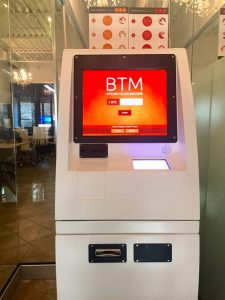
By Mike Fuljenz
In September, over just a couple of days, Bitcoin fell from $6,500 to $6,262. Bitcoin peaked at $19,783 on December 17, 2017, the week it first traded on a recognized futures exchange, because for the first time traders could “short” the speculative cryptocurrency, just like they can short gold bullion.
While bitcoin is down 68% in the last nine months, many of the other cryptocurrencies are down over 80%. The next two largest cryptocurrencies traded in U.S. markets are Ethereum (ETH-USD), which is down over 85% since January, and the aptly named Ripple (XRP-USD), down 91% since January.
Just like the “dot.com” bubble in 2000, these cryptocurrencies have no “earnings” or hard-money backing to give them real value. They trade on the fact that they rose rapidly in price during most of 2017. So investors poured into bitcoin, hoping for future profits.
Instead, these investors grabbed the proverbial “burning match” just as it reached the part where it burned the fingers of the next buyer. In this light, by comparison, gold’s price decline of 7% this year is small – reflecting the rise in the U.S. Dollar Index, year-to-date.
Last June, bitcoin first dipped below $6,000 when The Wall Street Journal and Washington Post reported on the widespread hacking of bitcoin accounts primarily in Asia, where regulations are lax. Bitcoin prices briefly recovered, but have remained below $6,500 since early September, down 68% from its peak.

One of the most bizarre aspects of bitcoin mania we’ve seen recently is the proliferation of “bitcoin ATMs”, some here in Texas, where I live and work. I have heard about businesses being approached to have bitcoin dispensers installed in their place of business. These dispensers act almost like ATMs, but they are called BTMs, dispensing fractional bitcoins.
There are so many red flags here that I hardly know where to begin. First, several IDs are required to access the machine. You don’t get the bitcoins at the machine; your bitcoins are sent to an address. Secondly, BTMs are far more expensive than online transactions or regular ATMs affiliated with a bank. Typical fees to cover these costs are 5%. Imagine taking $300 out of your ATM and only getting $285? You wouldn’t be very happy. The same 5% fee is assessed when you submit bitcoins back into the BTM to credit your account. The biggest problem is that the value of the bitcoins is declining over time. So the proprietor of the BTM could be blamed for dispensing worthless currencies with high fees.
For me, I will personally stick with the 5,000-year track record of gold, not the 10-year fad of computer-generated, artificially mined bitcoin accounts, subject to lost value, fraud, hacking, and high fees.












